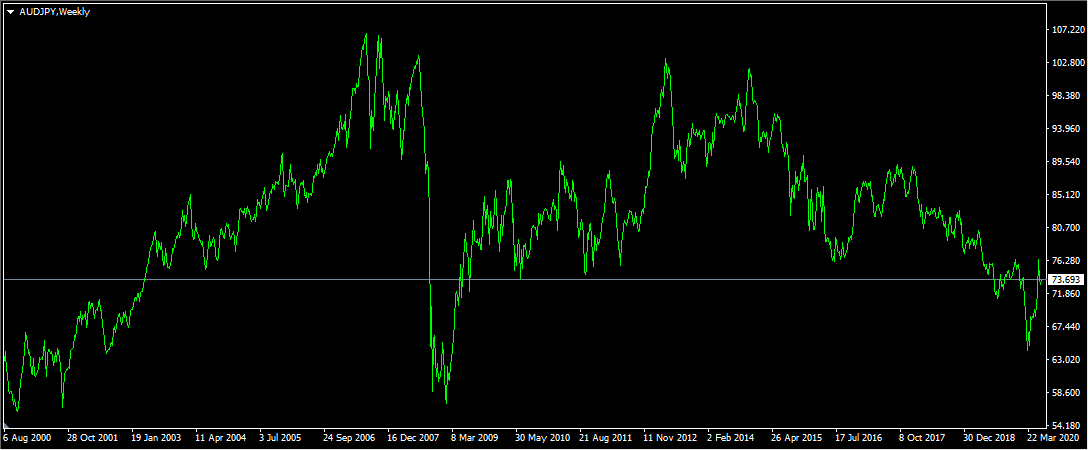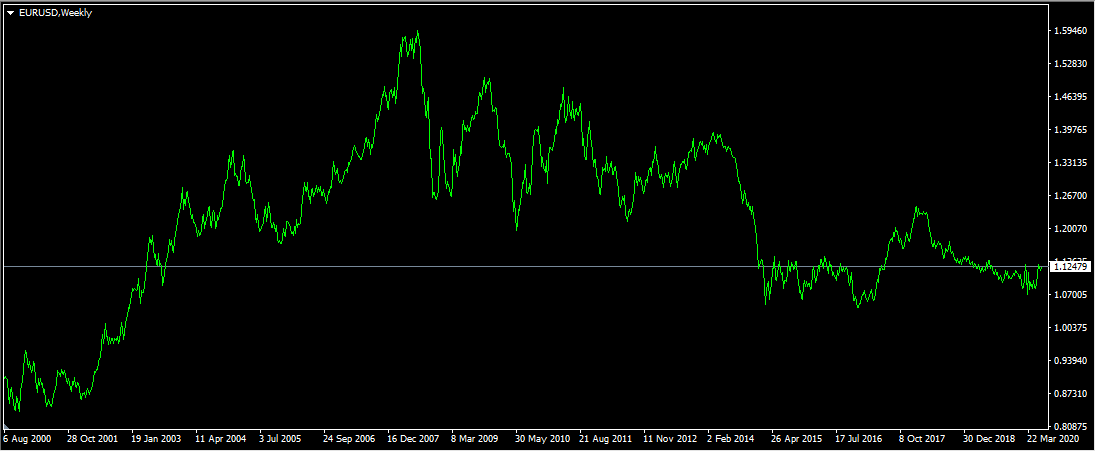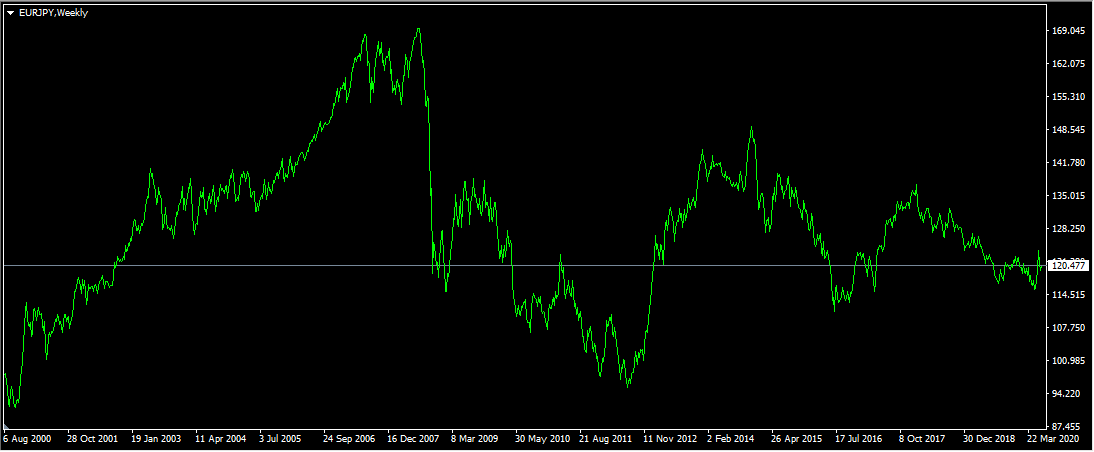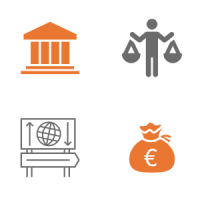Table of content
Many financial commentators and experienced professional Forex trades very often mentioned the term ‘funding currencies’ in the analysis. Therefore, many market participants, especially beginners, might wonder which currencies are covered by this term and what are the main characteristics.
The funding currencies’ meaning is very simple: those currencies are the ones that typically have very low-interest rates. Consequently, this makes borrowing in those currencies quite cheap and therefore, very attractive. As a result, some traders do use those currencies for funding purposes in carry trades.
This process involves the borrowing of low-yielding currencies in order to buy high-yielding currencies and earn daily income on interest rate differentials. However, for successfully achieving this purpose, it is not enough to only purchase currencies with high-interest rates. Instead, traders also need to identify and borrow in currencies that have a very low yield, in order to be able to capitalize on interest rate differentials.
Consequently, when a given central bank lowers its key interest rate to near-zero levels and keeps them low for many years. Therefore, it takes some time for the perception of funding currency to become entrenched. If a central bank does lower rates to zero, but then relatively soon reverses the policy and pushes rates up to significant levels, its currency will not be the most attractive asset for funding purposes.
As of 2020, there are at least three very popular funding currencies. The Japanese yen had fulfilled this role at least from the late 1990s and are still a very attractive option for this purpose, with its key interest rate of -0.1%. The Swiss franc became another trader’s favorite funding currencies, as the Swiss National Bank reduced rates to -0.75%. Finally, as the European Central Bank has gradually cut its own key interest rate to 0%, the Euro became another popular funding currency.
Finally, it had to be mentioned that the attractiveness of funding currencies is not strictly confined to carry trades. Some governments and large corporations do very often try to take advantage of very low-interest rates offered by those and issue some portion of their bonds in funding currencies. In fact, some number of individuals also take out loans and mortgages in those types of currencies, in order to benefit from those cheap rates.
What Is Funding Currency?
Forex traders use those types of currencies to carry funding. Therefore, the carry trade funding currency is the one in which market participants borrow money in order to buy higher-yielding currencies and receive daily income from brokerage companies, due to interest rate differentials.
So the next obvious question here is: Which currency fulfills the role of funding currency among Forex traders? Well actually, there are several options to choose from. In fact, as of 2020, there are at least 3 funding currencies in the market.
Firstly we have the Japanese yen. JPY has been one of the most favorite funding currencies for traders, since the late 90s. During this period, Japanese economic growth has stagnated. The country also experienced long periods of deflation, followed by months of very low inflation.

By that time the Bank of Japan has reduced rates to 0%, making it the lowest yielding currency among major currencies. In fact, for many years, JPY was nearly the only funding currency among major currencies. The reason behind this was the fact that before 2008, other major central banks have never adopted a near-zero interest rate policy.
After the great recession and the revision of the inflation target to 2%, the Japanese policymakers went even further, cutting rates to -0.1% and consequently, moving into the negative territory. So this made the Japanese yen a very attractive option for borrowing money. Therefore, the JPY has fulfilled this role for more than 20 years.
Another popular currency for borrowing is the Swiss franc. In the aftermath of the 2008 economic crisis, the Swiss National Bank has already moved into negative territory. However, this did very little to weaken the Swiss franc. Since Switzerland is surrounded by the Eurozone countries, the long term appreciation of the currency was unacceptable for SNB.
To halt the advance of its currency, the Swiss National Bank announced a 1.20 floor for EUR/CHF pair and defended this level for several years. However, as the European Central Bank began its quantitative easing program, the Swiss policymakers deemed it to be unsustainable and declared the end of the policy. However, after the collapse of the 1.20 floor with Euro, the SNB has become even more proactive in its efforts to weaken the Swiss currency, by reducing rates to -0.75%.
After some time banks began to pass on their negative interest rates to some of its clients. In fact, nowadays, the majority of commercial banks in Switzerland do charge clients a -0.75% rate for holding more than 250,000 CHF on their accounts. It goes without saying that this made the Swiss franc very unattractive options for savers. After all, they always have an option to convert their CHF amounts to USD or some other currency, where they do not have to pay negative interest rates.
Obviously, clients also have the option to withdraw cash and avoid those fees in that way. However, this mostly works with small sums of money. Hoarding tens of thousands of francs at home, might not be the safest option for clients.
However, this process also made the Swiss franc very attractive for borrowing money. This enabled many governments, corporations, and individuals to raise funds in CHF at very low borrowing costs.
The third attractive funding currency is the Euro. After late 2011, the European Central Bank started slowly reducing rates, eventually cutting them to zero during 2016. As a result, the single currency became an appealing choice to borrow money to carry trades, as well as for other purposes.
Breaking Down Funding Currencies
Now that we have discussed the basic meaning of the term, as well as most popular funding currencies, one might wonder what are characteristics of those currencies, do their exchange rates move any differently than that of other Forex pairs?
As mentioned above the Japanese yen has been the most popular funding currency among Forex traders. In fact, from 2000 until 2008, thousands of market participants have used AUD/JPY currency pair for currency carry trade purposes.
The reasoning behind this was simple, during this period, the Reserve Bank of Australia has kept interest rates from 4.25% to 7.25% range. In sharp contrast, during the same period, the Bank of Japan held rates from 0% to 0.5%. This means that the interest rate differentials have fluctuated between 3.75% to 7.25%.
Therefore, having an opportunity to earn up to 7.25% annually was very lucrative for many traders. Unlike with high-yielding savings accounts or certificates of deposit, here market participants could have used leverage and consequently, magnified their potential returns. For example, with 10:1 leverage, the return would be 72.5%, instead of 7.25%.
In order to illustrate the long term price action, we can take a look at several examples. Firstly, we have a weekly AUD/JPY chart:

As we can see from the chart above, during the summer 2000 the pair was trading near 98 level. During the subsequent years, the pair has risen steadily and quite considerably, eventually surpassing 169 mark by July 2008. This means that in less than 8 years, the Australian dollar has gained more than 72% against the Japanese yen.
However, as we can notice from the diagram, then the pair has dropped sharply. As the Reserve Bank of Australia has reduced rates from 7.25% to 3%, the pair has collapsed from 169 to 115 just in a matter of months. This downward trend continues until 2012 when AUD/JPY was already trading at 93 level. Despite this development, due to Bank of Japan’s aggressive easing policies, the pair has recovered and by June 2020, the pair has stabilized around 120 mark.
So what can we conclude from this example? Well, it is obvious that during the times of economic expansion, the high-yielding currency has a tendency to appreciate against the funding currency. If a given central bank sticks with policies of high-interest rates, its currency might keep gaining ground against some of its low-yielding peers.
However, during an economic downturn and rate cuts, funding currencies tend to make massive gains in relatively short periods of time. One of the most important reasons for this is unwinding carry trades, which have accumulated over the years.
Transformation to Funding Currency
Our previous example included the funding currency, which held that distinction for at least two decades. However, what happens if a given currency was not a funding currency in the past and became one only recently? How does the exchange rate patterns change after this transformation?
To respond to this question, we can take a look at this long term weekly EUR/USD chart:

As we can see from the above diagram, the pair has made consistent gains from 2002 until 2008, rising from $0.85 to $1.59. One of the reasons behind this transition was the fact that as the US Federal Reserve cut rates all the way down to 1%, the European Central Bank kept them from 2% to 4.25% range. This gave a certain advantage to the Euro, which made steady gains over the years.
The second period began in Summer 2008 and lasted until 2015. This essentially marked the transition period for the single currency. Due to the low inflation and policies of the European Central bank, the Euro was transformed from high-yielding currency to funding currency. The process itself was very painful for investors and savers with large exposure to a single currency. The EUR/USD pair fell dramatically and only stabilized around the 1.05 to 1.15 range.
However, as the ECB dropped rates to zero, this transformation process was complete and the long term decline of Euro has ended. Instead, the pair have settled for ranged trading, something which still persists as late as June 2020.
So as we can see from this example when a high-yielding currency transforms itself into a low-yielding funding currency, it tends to depreciate significantly and lose a significant portion of its value. However, once the process is complete, the monetary policy changes are already priced in and the exchange rates tend to stabilize for some time.
Currency Pairs with Two Funding Currencies
We have already discussed two different scenarios, however, the next obvious question is: What happens with the exchange rates of those pairs, which have two funding currencies? Are their price action patterns any different from those we discussed before?
To respond to this question, let us take a look at this daily EUR/JPY chart:

The price developments in the first period in this diagram are very easy to explain. From 2001 until 2008, the single currency has benefited from carrying trades, due to its higher yields, so it is not surprising that the Euro has advanced from 98 all the way up to 170.
The second period began in 2008, as the European Central Bank cut rates to 1% and therefore significantly reduced the attractiveness of the Euro for carry trades. The result of those policies was predictable, the EUR/JPY dropped down to 95.
Finally, since 2012 the pair recovered and during the later years, the pair settled for 110 to 135 range. Obviously, since the European Central Bank reduced rates to 0%, traders can not earn any rollovers on EUR/JPY rates.
Before this period, the pair was following multi-year long term trends. However, as the Euro also became a funding currency, the pair has moved sideways and settled for ranged trading. This is not surprising since when the Euro had higher interest rates, traders had to pay daily interest for keeping short EUR/JPY positions open.
This gave some traders a significant incentive not to do so. However, with ECB’s zero-rate policy in force, it removed those incentives. So unless either the European Central Bank or Bank of Japan changes the course of monetary policy at some point, the EUR/JPY pair might remain in a tight range for years to come.
In those cases, the real interest rate differentials might play a prominent role in determining the future path of the exchange rates. Since those currencies are not much useful for income investing, some people turn to those in order to preserve their purchasing power. Therefore, the one which is better at the task can certainly benefit from the appreciation.
Other Uses for Funding Currencies
As mentioned earlier, the appeal of funding currencies is not only limited to carry trades. The central bank decisions do not only apply to the Forex market, but its effects also extend to savings accounts and loan products of commercial banks.
Firstly, it had to be mentioned that those zero or negative interest rate policies have been very beneficial for Japanese, Swiss, and Eurozone member governments. It goes without saying that nowadays, nearly all developed countries have a huge amount of liabilities. Obviously, those governments have to pay coupons for their bonds, which can potentially make up a significant portion of public expenditure.

However, with such low-interest rates, those countries can borrow money very cheaply and overall spend money on servicing debt. After all, nowadays many governments have the ability to borrow money at negative real interest rates. This means that the inflation rate in those countries is higher than the rates, those nations have to pay for their debt obligations. For example, if in a given country the Consumer Price Index stands at 3% and interest on bonds is equal to 2%, then the government is borrowing at a negative interest rate of -1%.
This can be very beneficial for public finances in the short term. Yet, here it is worth mentioning that those policies do not come without its own risks. There is a distinct possibility that as a result of this process, the government can lose control over its spending and massively expand its debt pile. Then after some years, when the interest rates return to more normal levels, then the portion of interest rate payments can consume a large portion of the public revenues. This can easily become unsustainable and lead to a sovereign debt crisis.
It is clear that it is not only governments who take advantage of funding currencies. Several major multinational corporations do also issue their bonds in those currencies in an effort to cut their overall interest expenses on their debts. Essentially, the management of those companies tries to lock in those cheap borrowing rates as those become available due to the monetary policies of a given central bank.
Finally, there are banks in some countries, which do offer mortgages in Euros, Swiss Francs, or in Japanese yen, outside of those nations. Therefore, some individuals do try to take advantage of those opportunities.
Despite the obvious advantages of being able to borrow at very low-interest rates, this does not mean that it is a risk-free strategy. Here it is helpful to keep in mind that there is always an exchange rate risk attached to borrowing the money in foreign currency. This became very apparent back in 2015 when many people in Poland and the Czech Republic suffered heavy losses due to a sharp appreciation of the Swiss franc because their mortgages were denominated in CHF.
There were essentially two ways this development made the financial situation of those consumers much more difficult. The first obvious problem here was the fact that monthly payments for those mortgages in terms of local currency had risen substantially. This means that consumers had less disposable income for purchasing food, apparel, and other essentials. The second issue was the fact that the overall balance of the mortgage has also expanded considerably in terms of local currency. As a result, the debt burden of those individuals became larger and consequently more difficult to repay.
Obviously this argument goes in both ways. If a funding currency depreciates, those governments, companies and individuals who borrowed in that currency can receive substantial benefits. For example, the rapid depreciation of the Japanese yen back in 2012 came as a relief for those corporations and consumers who held their debts in JPY. This made their overall debt burden much lighter to carry and their monthly repayments much more affordable.
So as we can see, borrowing in funding currencies can certainly have its own benefits, but it does have its own risks and in some cases can lead to financial problems.
How a Funding Currency Works – Key Takeaways
- Funding currency is the one that usually has very low-interest rates for an extended period of time. This lets traders use this currency for funding carry trades. This means that market participants borrow money in funding currency, to buy high-yielding currencies and then capitalize on interest rate differential. As a result of this process, traders receive daily income from brokers, also known as rollover or interest swap.
- Among major currencies in 2020, there are 3 funding currencies. The Japanese yen has fulfilled this role at least since the late 1990s, with a current interest rate of -0.1%. The Swiss franc became another traders’ favorite funding currency in the aftermath of the great recession, with Swiss National Bank now holding rates at -0.75%. Finally, as the European Central Bank cut rates all the way down to zero during 2016, the Euro became another attractive currency funding currency for traders.
- Funding currencies typically tend to lose ground to high-yielding currencies in times of economic expansion. However, during an economic downturn or recession, funding currencies can make some significant gains in a rather short period of time. On the other hand, when the currency pair is composed of two funding currencies, its movement potential is rather limited, since such securities are not of much interest to carry traders and in general tend to be confined to some long term range.



